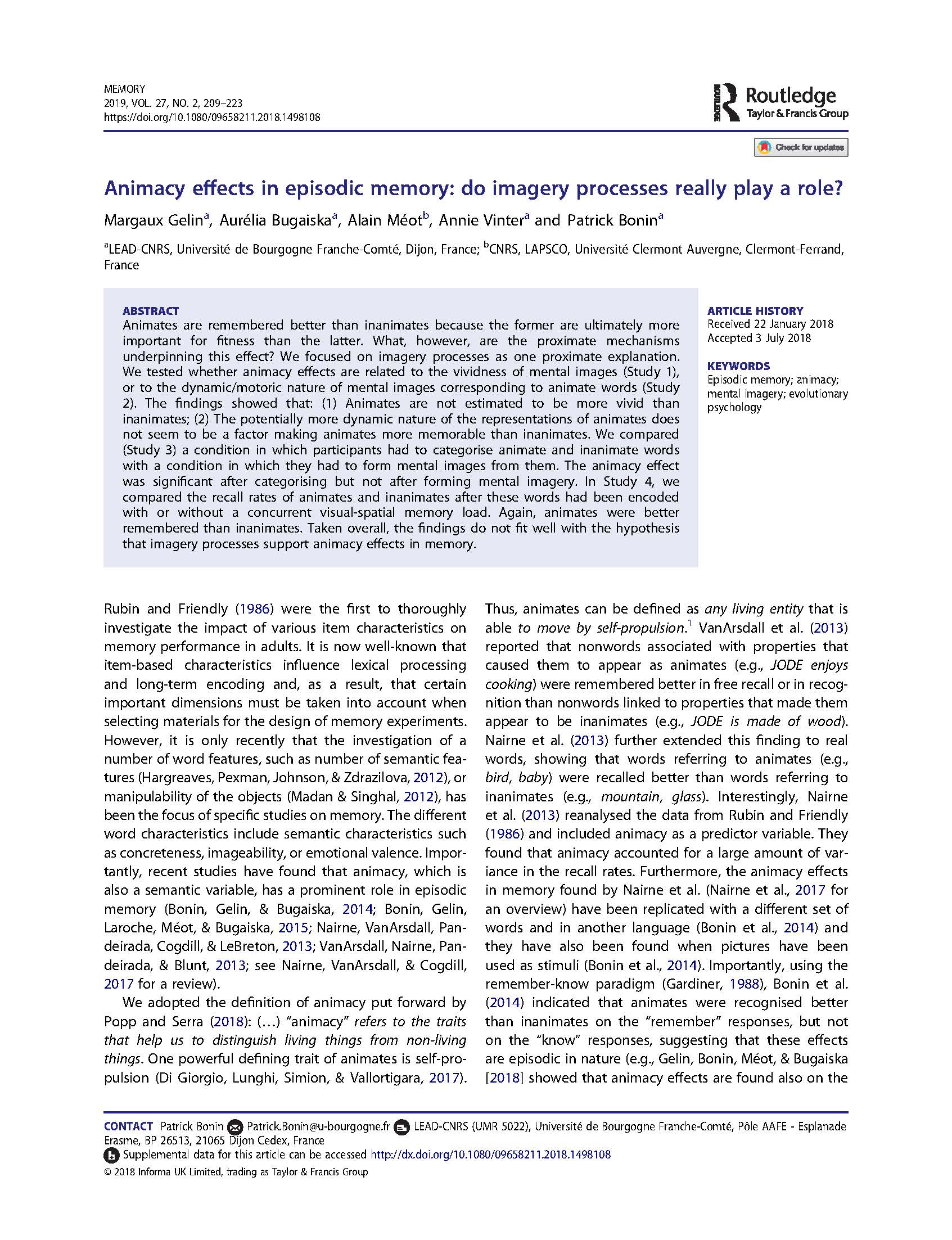Animates are remembered better than inanimates because the former are ultimately more important for fitness than the latter. What, however, are the proximate mechanisms underpinning this effect? We focused on imagery processes as one proximate explanation. We tested whether animacy effects are related to the vividness of mental images (Study 1), or to the dynamic/motoric nature of mental images corresponding to animate words (Study 2). The findings showed that: (1) Animates are not estimated to be more vivid than inanimates; (2) The potentially more dynamic nature of the representations of animates does not seem to be a factor making animates more memorable than inanimates. We compared (Study 3) a condition in which participants had to categorise animate and inanimate words with a condition in which they had to form mental images from them. The animacy effect was significant after categorising but not after forming mental imagery. In Study 4, we compared the recall rates of animates and inanimates after these words had been encoded with or without a concurrent visual-spatial memory load. Again, animates were better remembered than inanimates. Taken overall, the findings do not fit well with the hypothesis that imagery processes support animacy effects in memory.
Animacy effects in episodic memory: Do imagery processes really play a role?
